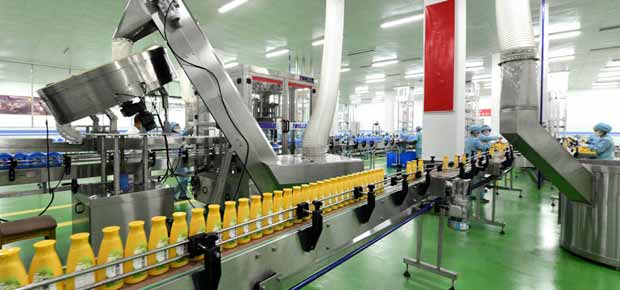The soap and detergent industry includes companies that are primarily engaged in manufacturing soap, synthetic organic detergents, inorganic alkaline detergents, and crude and refined glycerin from vegetable oils and animal fats. It is an international industry, and during the early years of 1990, world demand for its products has increased 1 to 3 percent every year. Many of the participants in the industry competed on a global basis. According to analysts, there is a firm correlation the standard of living of a nation and its usage of soap and detergent products. The analysts are expecting the industry to continue to grow in both the industrialized as well as developing nations.
According to recent trends, liquid cleansing products are outpacing the traditional bar soap and powder cleaning products. In addition to environmental and health considerations, societal transformation has propelled the changes in the soap and detergent industry.
Size
The industry includes about 700 companies with combined annual revenue of
about $17 billion. Major companies in the consumer sector include divisions
of P&G, Unilever, and Dial. Major companies in the commercial sector
include US Chemical and divisions of Ecolab. The industry is highly
concentrated with the top 50 companies holding almost 90 percent of the
market.
The market size of global soap and detergent market size was estimated to be around 31M tonne in 2004, which is estimated to grow to 33M tonne by 2008. Toilet soaps account for more than 10% of the total market of soap and detergents. In Asia, even though the countries like China and India are showing rapid growth in the toilet soap section, the Japanese toilet soap industry is showing signs of decline due to the preference of consumers for liquid soaps. This trend is also observed in other developed markets like the US and Europe, which is adversely affecting the toilet soap industry. Market share of body wash was estimated to be around 2% in 2004 and is showing signs of healthy growth in these markets.

Major products of soap and detergent industry include soaps, laundry detergents, dishwashing detergents, household-cleaning products, hair cleaning products, and toothpaste. Laundry detergents account for 40 % of the overall market, while soaps for 20 % and dishwashing detergent for 15 %. Laundry detergents come in powder as well as liquid form, and may contain also contain bleach additives or color brighteners. Dishwashing detergents come in powder, liquid, gel and tablet forms. Soap comes in bars or liquid forms and may have several properties, such as moisturizing, antibacterial, or deodorant benefits. The following figure gives an idea about the domestic detergent market of UK in the year 2002.
Competitive LandscapePopulation growth, especially households with children, drives demand in the consumer sector, while growth in economy drives demand in the commercial sector. The profitability of individual companies depends on several factors, such as efficient operations and effective sales and marketing. Large companies have scale advantages in domains like buying, manufacturing, distribution, and marketing. Small companies can effectively compete with large companies by formulating specialized products, offering superior customer service, or catering a local market. The industry is capital-intensive with average annual revenue per worker more than $700,000. The industry is evenly split between the commercial and consumer sectors, both being highly competitive with large companies spending millions to maintain market share.
The modifications in the cleaning products were also spurred by technical innovation, availability of improved ingredients, such as bleach additives, better optical brighteners, and improved technologies to improve the performance of soap and detergent products. Marketers packaged products differently to meet the needs and requirements of specialized users like households with infants or with men performing tasks that are traditionally associated with women. To meet the requirements of different market segments, the industry saw a development of brands and varieties. For example, a specific large super-market might contain more than 40 different varieties of soaps and detergent detergents including both liquids and powders.
The manufacturing of soaps and detergents is highly automated, which involves substantial capital investment in plants and equipment. Computers are used to control production equipment and manage inventory. Many companies use sophisticated techniques, such as electronic data interchange (EDI) to optimize the purchasing process. Due to the high level of automation, the average plant has fewer numbers of employees.
Research & Technology
The need to meet environmental regulations across the globe various
research efforts was undertaken by the soap and detergent industry during
the early 1990s. Sodium carbonate, Zeolite, sodium citrate, and sodium
nitrilotriacetate were under investigation as possible builders to replace
phosphates. Other questions that were being addressed, include - water
quality, product safety, chemical disposal, the ability to wash and clean in
unheated water, and indoor air quality.
Although several technological developments and an increasing expanding understanding of the chemical processes had improved the ability of industry to restore soiled garments and other objects to their presoiled condition, available soaps and detergents still failed to achieve the desired results. Chemical scientists, therefore, continued to work on developing and formulating innovative cleaning and laundry additives like new enzymes and oxygen bleaches.

If you have decided to make soap at home, you will need soap making supplies in the form of raw materials, soap making equipment & tools ...
Read More
Someone has rightly said that clothes are not just clothes. They form an integral part of a person's personality and tell a lot about their nature and...
Read MoreCleansing products play an important role in the daily lives of people.
Both soaps and detergents are cleansing products that we frequently use in our
Soap is designed as a product to be used once and then flushed down the drain...